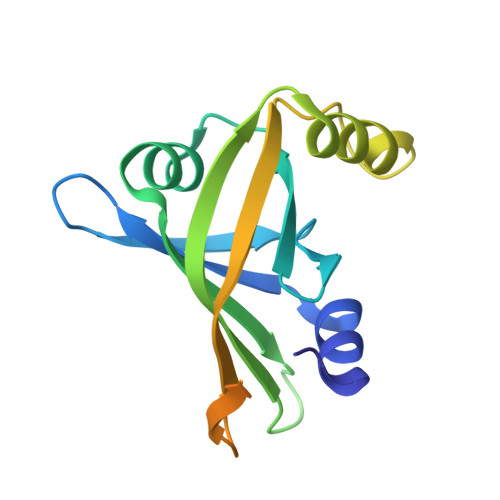Heme Binding to HupZ with a C-Terminal Tag from Group A Streptococcus.
Traore, E.S., Li, J., Chiura, T., Geng, J., Sachla, A.J., Yoshimoto, F., Eichenbaum, Z., Davis, I., Mak, P.J., Liu, A.(2021) Molecules 26
- PubMed: 33494451
- DOI: https://doi.org/10.3390/molecules26030549
- Primary Citation of Related Structures:
7KPZ, 7KQ2 - PubMed Abstract:
HupZ is an expected heme degrading enzyme in the heme acquisition and utilization pathway in Group A Streptococcus. The isolated HupZ protein containing a C-terminal V5-His 6 tag exhibits a weak heme degradation activity. Here, we revisited and characterized the HupZ-V5-His 6 protein via biochemical, mutagenesis, protein quaternary structure, UV-vis, EPR, and resonance Raman spectroscopies. The results show that the ferric heme-protein complex did not display an expected ferric EPR signal and that heme binding to HupZ triggered the formation of higher oligomeric states. We found that heme binding to HupZ was an O 2 -dependent process. The single histidine residue in the HupZ sequence, His111, did not bind to the ferric heme, nor was it involved with the weak heme-degradation activity. Our results do not favor the heme oxygenase assignment because of the slow binding of heme and the newly discovered association of the weak heme degradation activity with the His 6 -tag. Altogether, the data suggest that the protein binds heme by its His 6 -tag, resulting in a heme-induced higher-order oligomeric structure and heme stacking. This work emphasizes the importance of considering exogenous tags when interpreting experimental observations during the study of heme utilization proteins.
Organizational Affiliation:
Department of Chemistry, The University of Texas at San Antonio, San Antonio, TX 78249, USA.














